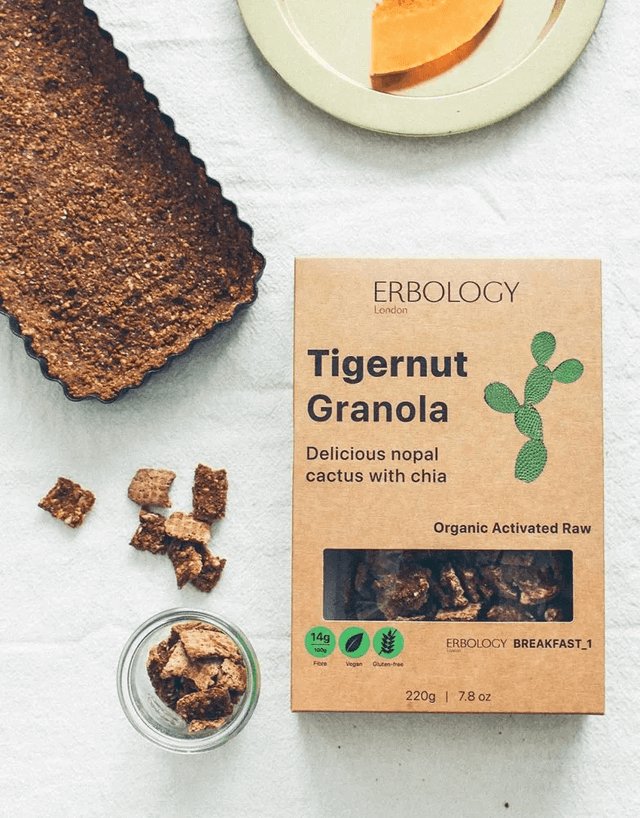30 Nov 2020
Buckwheat benefits
What exactly is a pseudocereal?
Like many other grains, buckwheat is a pseudocereal. This simply means that it's a seed which commonly eaten and used in the same way as a cereal.
Other pseudocereals include ancient grains like amaranth, quinoa, chia and acacia seed. In the 20th century, these nutritious grains fell out of fashion as nitrogen fertiliser became more common. This kind of fertiliser makes it very easy (and profitable) to grow wheat, encouraging farmers to choose this one crop over all the others. Luckily, thanks to more open-minded and health-conscious consumers, pseudocereals are making a big comeback.
Buckwheat has been a staple crop for thousands of years in many cultures around the world. It has been traced back to 4,000 BC in Japan, but as probably been grown for even longer in other places. In Yunnan Province, China, people have been growing buckwheat since 6,000 BC. Here, at the edge of the Tibetan Plateau, buckwheat grows more than 4,500 metres above sea level.
In Traditional Chinese Medicine, buckwheat is thought to benefit your Qi, or vital energy.
Where does buckwheat come from?
From its likely origins in ancient China, buckwheat made its way to the Americas via European settlers. Historically, Russia leads the world in buckwheat production, followed by China.
Buckwheat cultivation in the United States seems likely to rise due to an increasing interest in ancient grains, which often require less processing. Aside from their health benefits, it might be the case that people are ready to go back to their roots after decades of consuming processed wheat and corn.
This is especially true if people have connections to parts of the world where buckwheat is still regularly consumed. Nutritionist Vandana Sheth of the Academy of Nutrition and Dietetics says, "People might be more interested in trying these grains because of their place of origin, history and the culture".(1)
In India, buckwheat is so beloved that it is the focus of its very own festival! During the Navrati festival, people celebrate by only eating foods which contain buckwheat.
Growing buckwheat
Buckwheat is a very nutritious and, happily, low-maintenance crop. It only needs ten to twelve weeks to grow.
Buckwheat is also a reliable cover crop, which means that it can be grown in between other crops to help improve soil fertility and prevent erosion. As such, it helps other crops to grow, protects natural wildlife and is compatible with climate-smart agriculture. In short, growing buckwheat is great for restoring diversity both into our diets and into the environment.
Buckwheat seeds need to be hulled before consumption, but hulling the seeds is very easy to do.
If that wasn't enough, bees who collect nectar from the tiny flowers of the buckwheat plant produce a nutritious and uniquely delicious honey.
Buckwheat: the gluten-free backbone of your favourite dishes
You might be surprised to find out that, even if you've never eaten the grain itself, you've eaten buckwheat many times before! Many popular dishes include buckwheat as an ingredient, such as soba noodle, Polish kasha, Breton galettes and even a kind of polenta which comes from Apulia in northern Italy.
This special pseudocereal is also hiding another secret benefit: it's naturally gluten-free. Remember, wheat, wheat berries, barley, rye, kamut, farro, and spelt may all contain gluten, so a nutritious, gluten-free ancient grain is certainly very welcome.
Even if you don't have a sensitivity to gluten, chopping and changing your whole grains is likely very good for your health, anyway. Not only are you increasing diversity in your diet, exposing you to a wider range of healthy minerals, gluten-free grains have benefits for everyone. These grains may help prevent bloating, constipation, diarrhoea and leaky gut syndrome.
Gluten-free drinkers may spot buckwheat beer cropping up more in their local pub, while the grain itself is becoming more common in many popular dishes. Buckwheat porridge is just one example of how you can substitute this grain into your usual favourites.
Nutritional content of buckwheat
18% of buckwheat is protein, which is fantastic news for vegans and vegetarians who need to obtain their amino acids from plant sources. Buckwheat contains all the essential amino acids your body can't produce on its own.
Quinoa still leads the pack in terms of protein-rich grains, but buckwheat still storms ahead of rice, wheat, millet and corn. Moreover, buckwheat contains lysine and arginine, two specific amino acids which are difficult to find in other cereals and whole grains.
Buckwheat is also a source of important vitamins and minerals including niacin, magnesium, manganese, phosphorus, iron, zinc, and selenium.(2) Eating buckwheat will also provide you with fibre and B vitamins.
It is important to remember that some people suffer allergic reactions to buckwheat. Curiously, levels of buckwheat allergies are higher in Asian countries such as Japan and Korea than in Europe or America.



